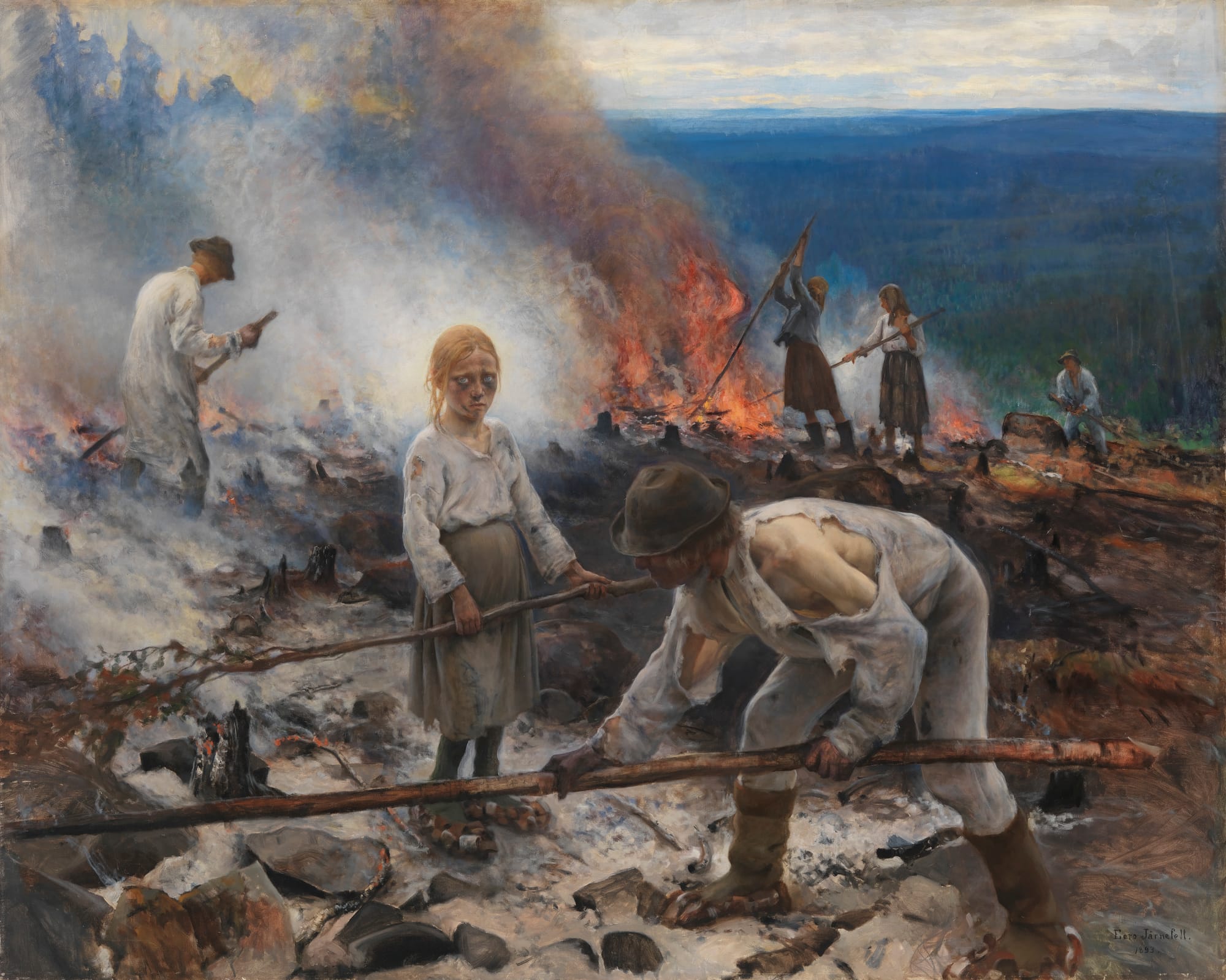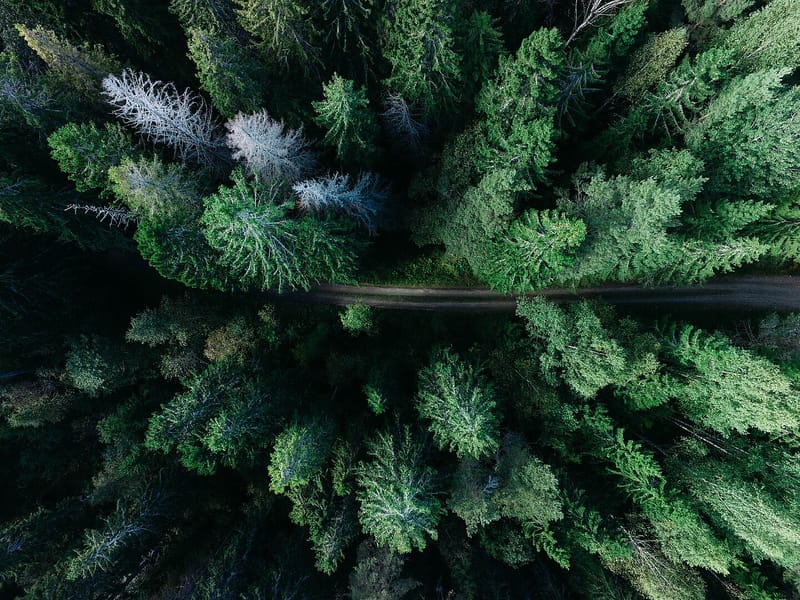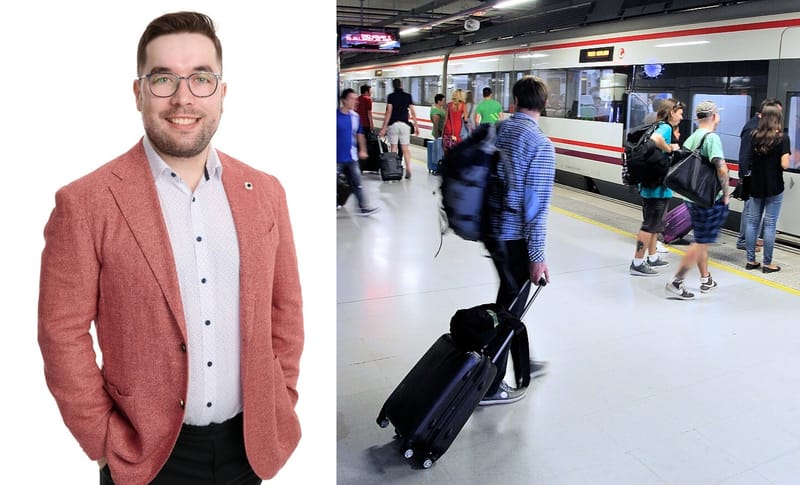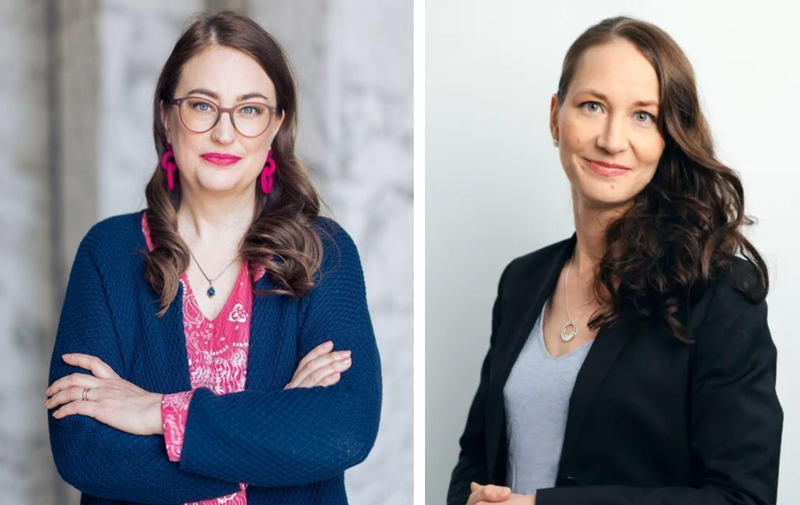Finland Cultural Guide - Part VII: Up north and to the islands
From the flat plains of Ostrobothnia to the wild forests of Kainuu, from Lapland’s endless tundra to the wind-swept shores of the Åland Island. In this final part of our journey, we follow the rhythm of the land as it stretches toward the Arctic and out across the sea.

Perttu Rytsölä
Ostrobothnia – Enterprise, faith, and the endless plains
Vaasa: Swedish-speaking culture and the Kvarken Archipelago
Seinäjoki: Tractor rallies and the Tango Festival
Oulu: A technology hub, lively student life, and Nallikari Beach
We continue north along the coast and arrive on the great open plains. Here the horizon stretches far, the land is flat, and even the sky seems closer. We are in Ostrobothnia.
The region is often called the Texas of Finland, a nod to its rural lifestyle, patriotic and conservative values, entrepreneurial spirit, and colorful history.
Ostrobothnians have played an outsized role in Finland’s wars and uprisings. Most famously, during the Civil War, when the Red Guards seized the southern cities, the White Army gathered here on the plains. Earlier, Jaakko Ilkka from Ilmajoki led the Peasants’ Revolt during the Swedish era, known as the Club War. The area also produced the 19th-century knife-fighters, tough young men notorious for brawls, and the Lapua Movement of the 1930s, whose attempted coup in Mäntsälä shook the young republic.
Culturally, Ostrobothnia is dazzlingly diverse. It is home to revivalist religious movements, especially Laestadianism; to growing regional centers like Seinäjoki, Kokkola, Vaasa, and Oulu; to deeply Swedish-speaking coastal towns like Jakobstad (Pietarsaari) and Kristinestad (Kristiinankaupunki); to strong traditions in sports and music; baseball, football, ice hockey, the huge Provinssi rock festival, and the famous Seinäjoki Tango Festival that draws thousands each summer.
Economically, Ostrobothnia has always looked outward. In the age of wooden sailing ships, Finland was the world’s largest exporter of tar, and Oulu gave rise to the word tervaporvari, “tar merchant.” The forest industry still exports heavily, but today the region’s powerhouse is energy technology. Agriculture remains the backbone: this is Finland’s most intensely farmed region and home to major food producers. Then there are one-of-a-kind enterprises, such as the massive village department store in Tuuri.
In sports, the small-town spirit is strong. The top-tier baseball club Vimpelin Veto regularly fills its stadium Saarikenttä, surrounded by two rivers, with crowds larger than the village itself. Ice hockey, football and traditional Finnish strongman sports like javelin and wrestling also thrive here.
Along the coast, Swedish is widely spoken. Unlike in the south, the Swedish-speaking communities here maintain especially close ties to Sweden. Today, strolling through Kristinestad can feel like being on the other side of the Gulf. Cultural links remain strong; one quirky example is the Vörå-based comedy trio KAJ, who even represented Sweden in Eurovision. Isolation has also bred peculiarities, such as a stronger-than-average local anti-vaccine sentiment.
The coastal towns Kristinestad, Jakobstad, Kokkola, and Raahe are all charming, with well-preserved wooden centers that escaped postwar modernization. Kokkola is so steeped in history that one of its neighborhoods has its own dialect.
Seinäjoki, the youngest major city in the region, grew around the railways. It combines cutting-edge architecture with a rural vibe of tractor rallies and tangos. The surrounding South Ostrobothnia countryside is dotted with vast fields, seas of barns, and the stately, ornamented farmhouses known as pohjalaistalot, symbols of local pride and prosperity.
Vaasa’s roots go back to the 1600s, though much of the old town was destroyed by fire. The rebuilt city, with its grid layout, is not particularly picturesque at the center, but history lingers in its side streets and harbor. Vaasa is a university town, a hub for students and business alike.
Further north along the coast, the Kalajoki sand dunes stretch for kilometers, a rare natural formation born of post-glacial land uplift and sculpted by wind and waves. The shallow, warm beach is among Finland’s most popular summer destinations.
Finally, we reach Oulu, Finland’s fifth-largest city. Founded around the same time as Vaasa, Oulu grew during the 18th century, again with the arrival of the railway, and boomed after World War II. Its next leap came with the rise of Nokia, when the city became a national tech hotspot. The University of Oulu supported Nokia with its research in telecommunications and later became a world leader in biosciences under geneticist Leena Palotie.
Oulu’s grid plan hints at another fire: in 1822, three-quarters of the city burned, including the town hall. Rebuilt in neoclassical style, parts of that architecture remain today. Its symbols range from the jovial Toripolliisi statue by the market square to the rebellious graffiti slogan Paska kaupunni (“Shitty city”) that spread through the 1980s.
The city has produced many distinctive artists, including singer-songwriter Kauko Röyhkä, indie-pop artist Pehmoaino, and the legendary metal band Sentenced. Its alternative spirit lives on in quirky events such as the Air Guitar World Championships and the Oulu Music Video Festival.
In summer, the long beach of Nallikari draws sunbathers and windsurfers. Despite being a sizable city, Oulu keeps nature close, so much so that locals joke about ski urbanism, meaning you can live downtown and still ski straight from your door.
Distance, isolation, and long winters have forged a culture of self-reliance and quiet strength in the north. Visitors may first notice the reserved silence of Oulu’s people, but when they speak, they speak from the heart.

Kainuu: Songs, forests, and resilience
Eastward the road bends into Kainuu, the song filled wilderness. Few parts of Europe have been less densely settled, though people have always lived in these forests. The region’s soul echoes in the runo singing that physician and folklorist Elias Lönnrot recorded in the 1800s for The Kalevala, moving from cabin to cabin, tending the sick and listening as they sang creation myths and heroic sagas. The Kainuu dialect carries a strong, lilting melody.
Kajaani, the regional center, feels like a frontier town: endless nature on all sides, a compact and busy main street in the middle. Poverty marked Kainuu so long that its provincial song is Nälkämaan laulu, the Song of the Hungry Land, yet its verses honor resilience and pride in harsh conditions. Bogs and rapids, clear lakes, fells and wildlife give the region a grand stage for adventure.
Forests still drive the economy. When the big Kajaani paper mill closed in 2008, anxiety ran high, but a new line of business arrived, data centers moved in. The area also has many mines.
Sport binds communities together. Sotkamon Jymy is a perennial baseball champion, its Hiukka Stadium on the lake counted among the most beautiful grounds in Finland. Vuokatti nearby serves as a year round sports center. Orienteering flourishes across this perfect terrain.
Deeper east lies Kuhmo, surrounded by forests with Finland’s densest bear and wolf populations. Each July the Kuhmo Chamber Music Festival fills the quiet with world class music. Despite the remoteness, Kainuu’s cultural life is ambitious. Kajaani’s theater is renowned, and the beloved poet Eino Leino was born here. Farther north, Ruka near Kuusamo draws holidaymakers. Reindeer herding endures, and the land is rugged and distinctive, full of canyons, free cascading falls and deep ravines.

Lapland: Fells, legends, and the arctic spirit
We cross into Lapland, a region of mountains in miniature, old stories and an Arctic economy. Rovaniemi is the capital, Levi and Ylläs the best known ski resorts, and farther north lie Enontekiö, Inari and Utsjoki, where Sámi culture is strongest and Lake Inari broods like an inland sea. Lapland’s three pillars are tourism, reindeer herding and mining. Eastern Lapland is the wilder side, western Lapland is more industrial.
At the head of the Gulf sits Kemi, northern Finland’s key industrial port, shipping pulp, paper and board worldwide. Kemi’s old wooden quarters soften the industrial edge, and the SnowCastle shows each winter what snow and ice can become.
North flows the Kemijoki, Finland’s longest river at 550 kilometers, and crossing it brings you to Tornio, separated from Sweden only by the broad, slow Tornionjoki. A summer swim there is hard to forget. The river valley was one of the first parts of Finland to emerge from the ice more than ten thousand years ago, drawing seal hunters to its shores.
Tornio, founded in 1621, is among the oldest Finnish cities and had been a hub for fur and salmon trade long before that. Over time a cross border culture formed, mixing Finnish, Swedish and Meänkieli. Tornio and Swedish Haparanda feel like one town with two sides, their centers within walking distance. Outokumpu’s steelworks dominate local employment.
From Tornio it is 130 kilometers to Rovaniemi. Tourism has surged so fast that housing is tight, which in turn strains the labor market. The region’s star is Levi in Kittilä with slopes that challenge and a growing village of hotels and restaurants. Ylläs in Kolari is higher and broader and a shade calmer. Farther north, Saariselkä in Inari is a magnet for cross country skiers.
Rovaniemi itself rebuilt from ashes. Retreating German troops burned the town in 1944, and the new city took shape on a plan that from the air resembles a reindeer’s head. The University of Lapland helped secure its role as the cultural capital of the north. Santa Claus draws global crowds, while the city’s alternative currents show in Lordi’s Eurovision fame and in the raw documentary Reindeerspotting. A few hours up the road, Sodankylä’s Midnight Sun Film Festival screens art films through the white nights of June.
The Sámi live throughout Lapland, especially in Enontekiö, Inari and Utsjoki. Around 10,700 Sámi live in Finland, about a third speaking one of three Sámi languages: Northern Sámi, Inari Sámi and Skolt Sámi. Their languages, like Finnish, came from the Uralic family, but centuries of contact with older populations left unique words and structures. Historically the Sámi lived as far south as the coast. As agriculture spread they withdrew north to continue hunting and fishing, then turned to reindeer herding as wildlife declined.
Old nature beliefs survived into the eighteenth and nineteenth centuries before church led persecution burned drums, enforced conversion and pushed assimilation. Poverty and exclusion lingered for decades, until attitudes began to change in the 1960s with global Indigenous movements. Today the Sámi have cultural self government through the Sámediggi, which decides on funds allocated to them and must be consulted on development in their areas. Rich natural resources bring recurring conflicts between industry and Indigenous rights, and debate continues over who qualifies as Sámi. Reindeer herding remains iconic, yet relies on subsidies to survive.
The far north is almost pure wilderness, a network of national parks and fells. The famed Karhunkierros trail in Urho Kekkonen National Park runs for eighty kilometres past rapids, cliffs and suspension bridges, between wilderness huts and over open tundra. In autumn, when ruska paints the shrubs and birches, Lapland is at its most radiant.
On Lake Inari, Ukonsaari rises sheer from the water, once a sacred place where fires flared on the shores, joiks carried over the waves and drums sounded late into the night. The lake itself is vast, its waters the clearest of Finland’s great lakes. Long ago it connected to the Arctic Ocean. Today it drains to the Barents through the Paatsjoki. Cabins of round log crouch on lonely shores reached by boat in summer and snowmobile in winter.

One last chapter remains, out in the storm washed Åland Islands. When Finland became independent, Sweden contested Åland’s status, arguing for cultural kinship. A petition for union with Sweden drew 95 percent of local signatures. Finland objected and the League of Nations ruled that Åland would remain Finnish with autonomy. The islands were demilitarized, given a parliament and kept outside EU tax rules, which made duty free trade possible.
The key safeguard is the right of domicile, created to preserve Swedish speaking culture. Only residents with at least five years on the islands and proficiency in Swedish can buy property, start a company, vote or stand for office. The rule has protected Åland’s culture from assimilation, but it has also limited growth, leaving the islands more reliant on state support than most regions.
Shipping became Åland’s signature industry under Russian rule through cooperative ownership, where villages built and owned ships together to spread risk and reward. Today the islands still field a merchant fleet far beyond their size. Other major employers include banking, breweries, technology and agriculture, namely potato chips.
The Åland Maritime Museum tells the islands’ seafaring story. Each August a chamber music festival fills historic venues with performances. In sport, IFK Mariehamn plays in Finland’s top football league. Ferries run everywhere, including to lonely lighthouses that offer the most unforgettable views of all.
Kastelholm Castle is the headline sight, a medieval stronghold that flourished in the fifteenth and sixteenth centuries, endured sieges and hosted witch trials imported from Sweden, trials that went no farther into Finland. The Crimean War also left its mark. In 1854 the British navy bombarded the unfinished Bomarsund Fortress and ravaged coastal defenses as far north as Tornio.
The landscape is a tapestry of meadows and junipers, old orchards, smooth red granite, stone fences and red painted barns and farmhouses. It is a perfect place to tour by bicycle in summer.
The previous chapters of Finland Cultural Guide:
- Part I: Discovering Helsinki
- Part II: Metropolitan Helsinki and central Uusimaa province
- Part III: Turku and Varsinais-Suomi
- Part IV: Hämeenlinna, Tampere & Lahti – Heartlands of Finland
- Part V: Uusimaa, Kymi and Karjala
- Part VI: From the heartlands to the Western Coast






